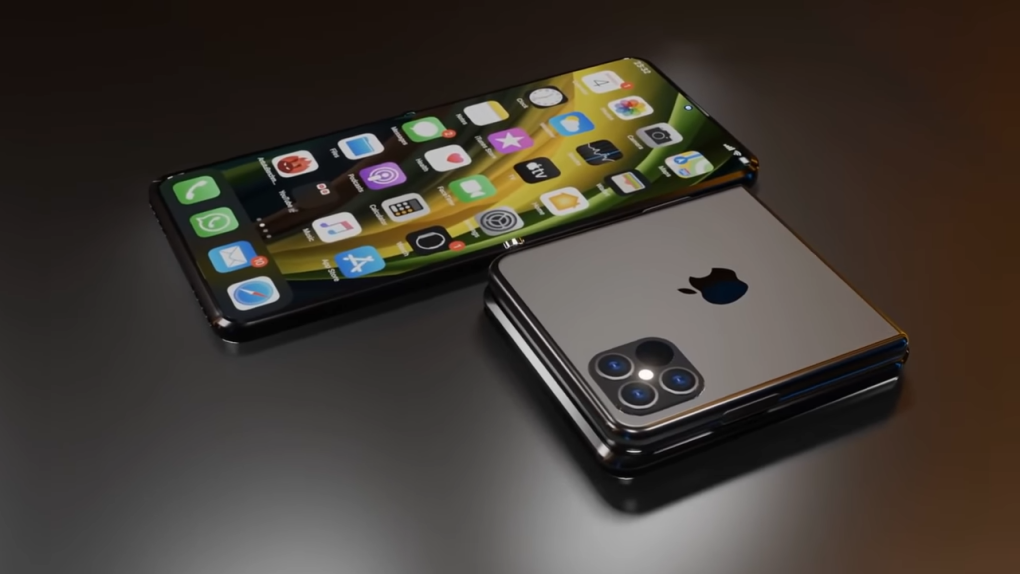Battery life is one of the most important features of a mobile device, especially the iPhone. That’s because Apple has never attempted to outperform its rivals. iPhones don’t have the best battery capacities, and they do not support the fastest wired or wireless charging speeds. Yet, they usually offer more than decent battery life. Apple has found ways to improve battery life without engaging in that sort of contest. Rumors say the company wants to increase the battery capacity on the iPhone 13 series. Also, Apple might make a significant change to the internal design of its iPhones that will allow it to bump the battery size even further. If accurate, that’s excellent news for upcoming iPhones. But it’s even better news for the foldable iPhone that’s reportedly coming in the next two to three years.
When will the first foldable iPhone launch?
Bloomberg’s
Mark Gurman penned another edition of his PowerOn newsletter last weekend. He focused on Apple’s connector problem and the company’s COVID-19-plans. But he also addressed other important matters, like the launch of AirPods 3 and the status of the foldable iPhone. The latter is an exciting topic, as we’ve seen plenty of rumblings mentioning Apple’s interest in foldable handsets.
Several leakers claimed that Apple is in the early stages of foldable iPhone testing. The company is reportedly working on several foldable phone formats. Also, it might be using components from Samsung and other foldable display makers in its tests. Samsung is about to launch its third-gen foldables, and the handsets promise to be more durable than ever, foldable screens included.
Gurman thinks Apple needs two to three more years to bring the foldable iPhone to market, per India Today. He’s one of the insiders who addressed Apple’s foldable iPhone plans before.
Integrated passive devices and iPhone battery life
The iPhone maker is reportedly looking at using smaller internal components to increase battery life on its devices. That’s according to Digitimes (via MacRumors).
Those smaller components are IPD, short for integrated passive devices. It’s these components that will allow Apple to increase the iPhone’s battery capacity:
Apple is expected to significantly increase the adoption of IPD (integrated passive devices) for new iPhones and other iOS products, providing robust business opportunities for manufacturing partners TSMC and Amkor, according to industry sources.
Peripheral chips for iPhones, iPad and MacBook series are going slimmer with higher performance to allow more space for larger-capacity battery solutions for the devices, with the demand for IPDs to grow sharply in line with the trend, the sources said.
It’s unclear how soon Apple will use IPD to improve the battery life of its iPhones. The iPhone 13 versions will have almost the same overall sizes and footprints as their predecessors. Yet all four phones will feature bigger batteries. That extra juice will surely benefit the iPhone 13 Pro models that will reportedly feature power-consuming 120Hz displays.
Battery life and foldable phone designs
Battery life will be all the more important on foldable iPhone featuring top hardware. Such a device will probably feature a high-end display that will support at least 120Hz refresh rates. Some of the internal space will be dedicated to the hinge that folds and unfolds the screen. So Apple will want to make the most of the remaining space to increase the battery. That’s especially if Apple goes for a clamshell foldable iPhone design like the concept in the top image.
There’s no indication that Apple is developing IPD specifically for the foldable iPhone. But the innovation will benefit other iOS products, and the foldable iPhone certainly falls into that category.
If Gurman’s estimation pans out, Apple might have a foldable in stores in 2023 at the earliest. Then again, we’re looking at speculation here. As for the Digitimes report, the Asian tech site isn’t always accurate about Apple’s plans.








